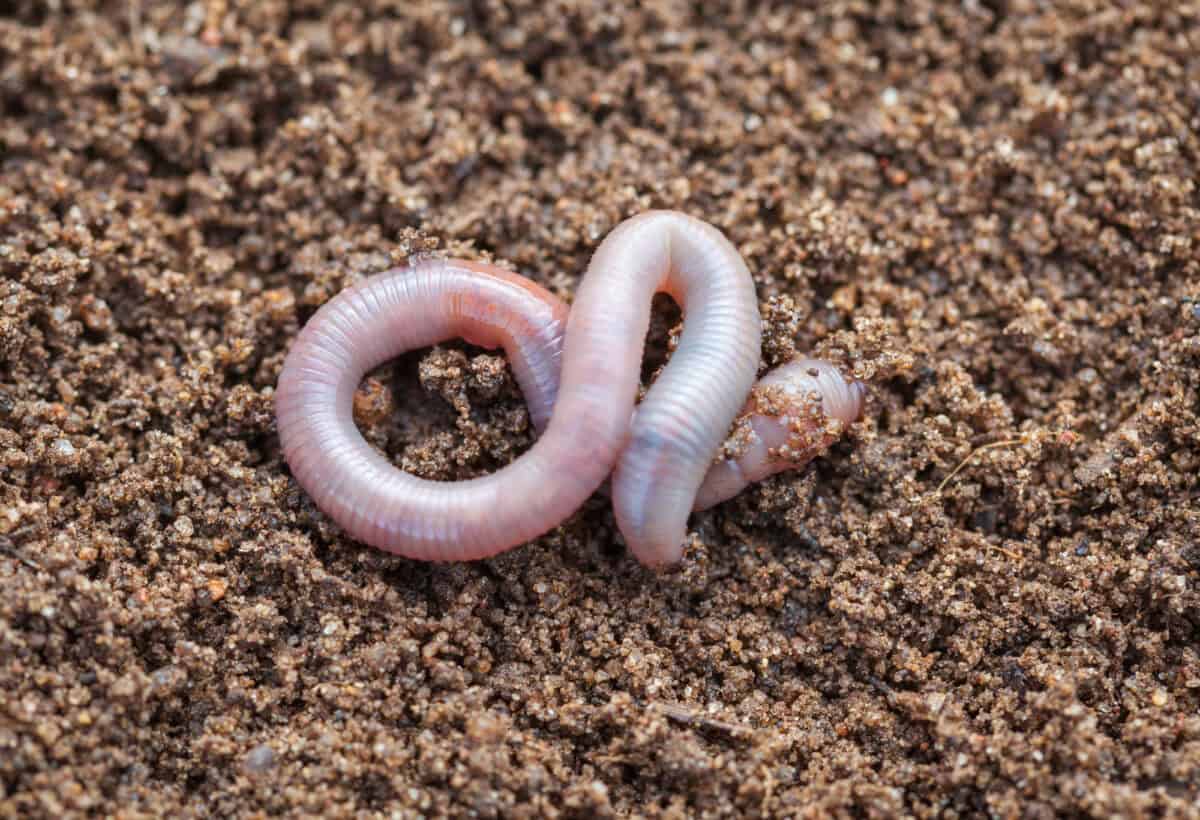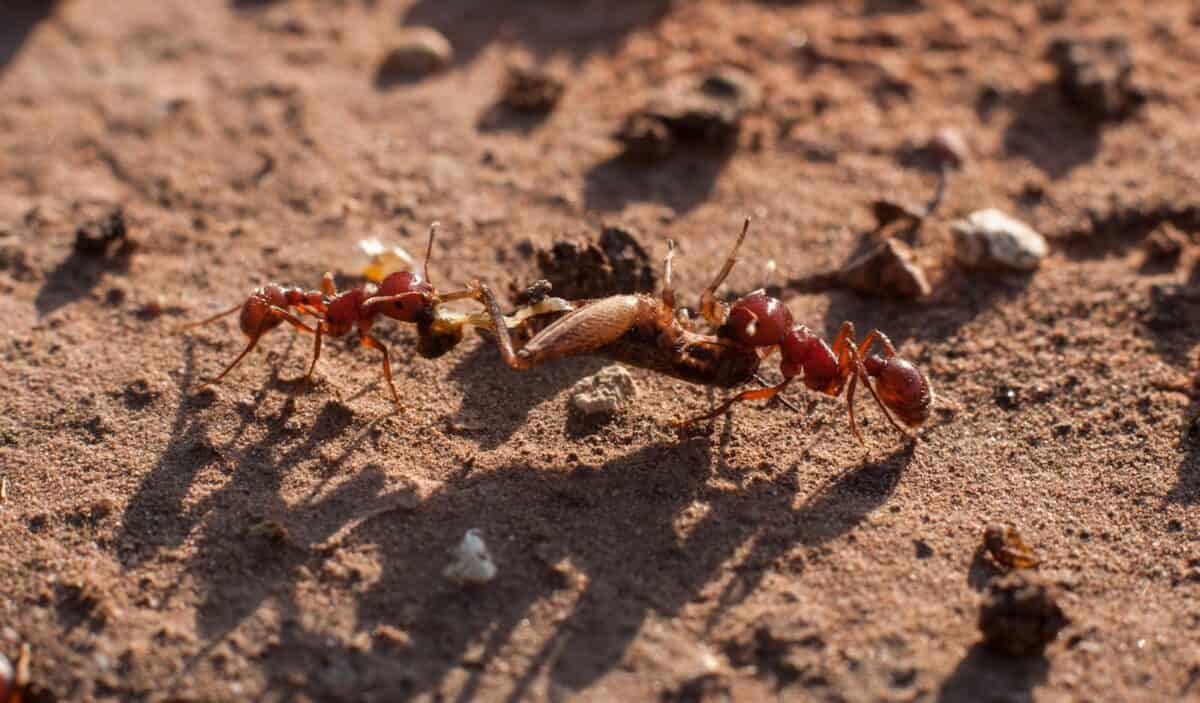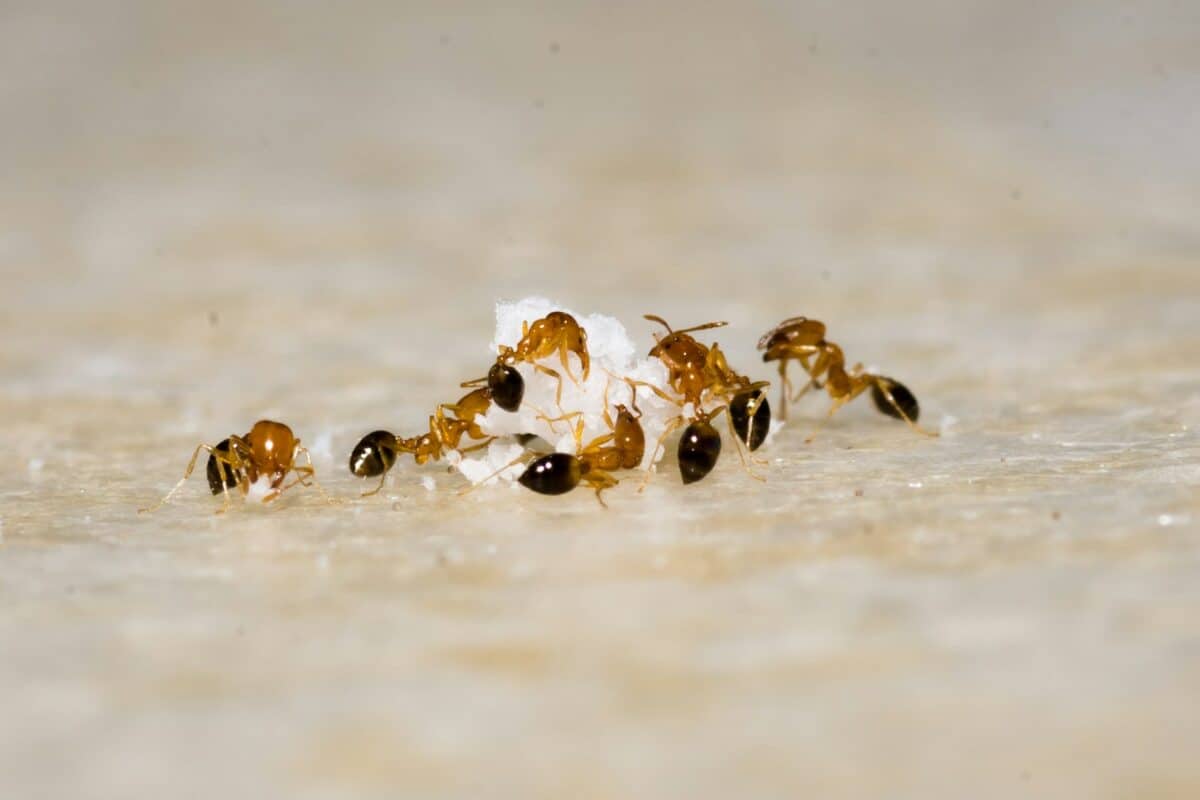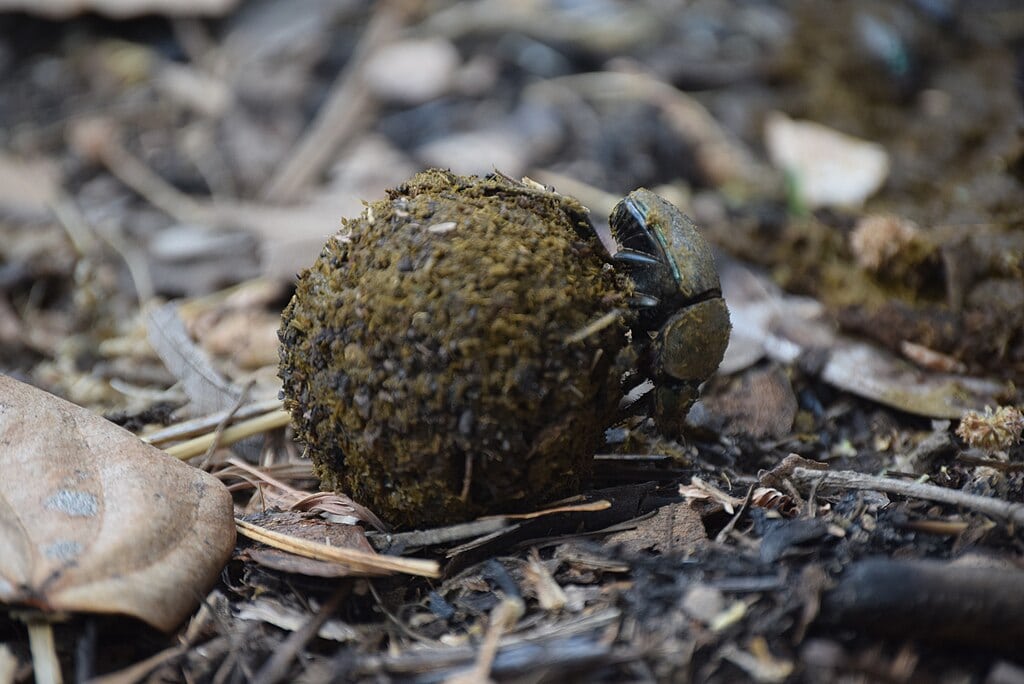In the vast tapestry of life on Earth, it’s often the smallest organisms that wield the most significant ecological power. While lions, elephants, and whales might capture our imagination with their majestic presence, microscopic creatures and small invertebrates are frequently the true ecosystem engineers—shaping environments, cycling nutrients, and maintaining the delicate balance that sustains all life. From the depths of the ocean to the soil beneath our feet, these diminutive beings demonstrate that ecological importance isn’t measured by size. This article explores 13 tiny organisms whose outsized influence makes them the unsung rulers of their respective ecosystems.
13. Krill The Ocean’s Unsung Heroes

Measuring just 1-2 inches long, Antarctic krill (Euphausia superba) might seem insignificant, but these tiny crustaceans form the foundation of the Southern Ocean’s food web. Traveling in swarms so vast they can be seen from space, krill convert phytoplankton into protein that feeds everything from fish to the world’s largest creatures—blue whales. A single blue whale can consume up to 4 tons of krill daily, demonstrating the critical importance of these small organisms. Beyond their role as food, krill contribute to carbon sequestration by transporting carbon from surface waters to the deep ocean through their daily vertical migrations and fecal pellets, making them crucial players in global climate regulation.
12. Phytoplankton Microscopic Oxygen Factories

These single-celled marine organisms might be invisible to the naked eye, but phytoplankton generate approximately 50% of the Earth’s oxygen—more than all forests combined. As primary producers in aquatic ecosystems, they form the base of marine food webs while absorbing enormous amounts of carbon dioxide through photosynthesis. Some species, like diatoms, build intricate glass-like shells from silica, which eventually sink to the ocean floor, effectively sequestering carbon for centuries. When phytoplankton populations shift due to ocean warming or acidification, the ripple effects extend throughout marine ecosystems and can impact global climate patterns, demonstrating how these microscopic organisms exert planetary-scale influence.
11. Earthworms Engineers of Soil Health

Charles Darwin once estimated that earthworms process about 20 tons of soil per acre annually, and modern science confirms his observations about these ecosystem engineers. As earthworms tunnel through soil, they create channels that enhance water infiltration, oxygen flow, and root penetration. Their digestive systems transform organic matter into nutrient-rich castings that can contain 5 times more nitrogen, 7 times more phosphorus, and 11 times more potassium than surrounding soil. Research shows that introducing earthworms to degraded landscapes can increase plant productivity by 25% or more. In healthy ecosystems, these humble creatures continually rebuild and maintain soil structure, creating the foundation for terrestrial life while silently processing the planet’s waste into new fertility.
10. Coral Polyps Architects of Marine Metropolises

Individual coral polyps rarely exceed the size of a pencil eraser, yet collectively they construct the largest living structures on Earth. These tiny cnidarians extract calcium carbonate from seawater to build elaborate limestone skeletons that, over millennia, form vast reef systems visible from space. Covering less than 1% of the ocean floor, coral reefs support approximately 25% of all marine species, providing habitat complexity vital for biodiversity. The Great Barrier Reef alone—built by billions of tiny polyps—spans over 1,400 miles and houses more than 1,500 fish species. Beyond their ecological significance, coral reefs provide coastal protection valued at $94 billion annually by absorbing wave energy and preventing erosion. These tiny creatures demonstrate how collective action, sustained over time, can transform environments on a massive scale.
9. Bees Powerhouse Pollinators

Though individual bees weigh mere fractions of an ounce, their ecological and economic impact is staggering. These buzzing insects pollinate approximately 80% of flowering plants and about 75% of global food crops—translating to roughly one in every three bites of food we consume. The annual value of bee pollination services worldwide exceeds $217 billion. Beyond cultivated crops, wild bee species maintain plant genetic diversity across natural ecosystems by facilitating cross-pollination. Their systematic foraging behavior makes them significantly more efficient than wind or artificial pollination methods. As colony numbers decline globally due to habitat loss, pesticide use, and climate change, their absence reveals the disproportionate ecological power these small insects wield over both natural ecosystems and human food security.
8. Termites The Tropical Decomposers

Often maligned as destructive pests, termites play an indispensable ecological role in tropical and subtropical regions. These tiny insects process more than half of all dead wood in tropical forests, recycling nutrients locked in cellulose that few other organisms can digest. In African savannas, termite mounds create biodiversity hotspots, with research showing that areas around termite colonies support 50% more trees and different vegetation compositions than surrounding plains. The mounds themselves modify soil properties, increase water infiltration, and create microhabitats that persist for centuries. Scientists estimate that termites process nearly 30% of the annual carbon cycle in some tropical ecosystems, making these insects—most weighing less than 0.01 grams individually—among the most significant carbon managers in warmer regions of our planet.
7. Zooplankton The Ocean’s Recycling System

These microscopic and near-microscopic animals drift through the world’s oceans, forming a crucial link between primary producers (phytoplankton) and larger marine life. Copepods—among the most abundant zooplankton—may be the most numerous multicellular animals on Earth, with population estimates reaching into the quadrillions. Through their daily vertical migrations—rising to surface waters at night to feed and descending to deeper waters during daylight—zooplankton transport carbon and nutrients through different ocean layers. This “biological pump” helps regulate marine nutrient cycles and contributes significantly to carbon sequestration. Research indicates that without zooplankton, atmospheric carbon dioxide levels would be approximately 200 ppm higher, highlighting how these tiny organisms help regulate global climate through their collective behavior.
6. Mycorrhizal Fungi The Underground Network

Hidden beneath the soil, microscopic fungal filaments form vast networks that connect to plant roots in symbiotic relationships called mycorrhizae. These fungal partners effectively extend a plant’s root system by up to 700%, dramatically increasing access to water and nutrients, particularly phosphorus. In exchange, plants provide fungi with carbon compounds from photosynthesis. Recent research reveals these networks function as communication channels, transmitting chemical signals between plants—sometimes called the “Wood Wide Web.” A single teaspoon of healthy soil can contain several miles of fungal hyphae, and over 90% of land plants depend on these relationships. The ecological influence of these microscopic fungi is so profound that forest restoration projects without appropriate mycorrhizal partners typically show 30-80% higher plant mortality rates, demonstrating how these invisible networks underpin terrestrial ecosystem health.
5. Dung Beetles Nature’s Sanitation Workers

Despite rarely exceeding 1.5 inches in length, dung beetles perform ecosystem services with remarkable efficiency. A single pair of these insects can bury a ball of mammal excrement 250 times their weight in under 24 hours. Through this burial process, they improve soil fertility, reduce greenhouse gas emissions from decomposing dung, suppress parasites, and disperse seeds found in animal waste. Studies in cattle pastures show that dung beetles can reduce parasite populations by over 90% while improving soil carbon content. Their activity contributes approximately $380 million annually to the U.S. cattle industry alone by enhancing pasture quality and reducing livestock parasite loads. When dung beetles were introduced to Australia to manage waste from introduced cattle, they processed over 2 million tons of dung annually, demonstrating how these small insects can transform entire landscapes.
4. Tardigrades The Ultimate Survivors

Measuring between 0.1 and 1.5 millimeters, tardigrades—also known as water bears or moss piglets—may be the most resilient animals on Earth. These microscopic invertebrates can survive environments that would kill almost any other organism: temperatures from near absolute zero (-458°F) to 300°F, pressures six times greater than the deepest ocean trenches, radiation levels thousands of times the lethal human dose, and complete dehydration for up to 30 years. Found in virtually every habitat from mountain peaks to ocean sediments, tardigrades influence ecosystem resilience and microbial diversity. Their ability to enter cryptobiosis—a state of suspended animation—and then revive when conditions improve allows them to persist through extreme environmental fluctuations and potentially transport microbes between habitats. This extraordinary survival capacity makes them important indicators of ecosystem health and potential models for understanding how life might adapt to climate change.
3. Ants Tiny Ecosystem Engineers

Despite their small size—most species weighing less than 5 milligrams—ants collectively outweigh all wild mammals on Earth. These social insects turn more soil than earthworms in many ecosystems, improving aeration, water infiltration, and nutrient distribution. Leaf-cutter ants cultivate complex fungal gardens, effectively practicing agriculture millions of years before humans. In tropical forests, ants protect certain plant species from herbivores in exchange for shelter or nectar, creating complex defensive partnerships that shape plant communities. Desert harvester ants collect and disperse seeds, determining which plant species succeed and flourish across vast landscapes. One study in Arizona found that a single colony distributed over 300,000 seeds annually. With over 12,000 known species occupying nearly every terrestrial habitat, ants demonstrate how coordinated collective behavior among tiny organisms can transform entire ecosystems.
2. Plankton Foraminifera Microscopic Climate Architects

These single-celled marine organisms, typically smaller than a grain of sand, have played an outsized role in Earth’s climate history. Foraminifera (“forams”) build intricate calcium carbonate shells that eventually sink to the ocean floor when they die. Over millions of years, these accumulated shells have formed vast limestone deposits—including the white cliffs of Dover and much of the Egyptian pyramids’ building material. Scientists estimate that forams remove approximately 43 million tons of carbon from the ocean annually. By extracting calcium carbonate from seawater, they help regulate ocean chemistry and, by extension, atmospheric carbon dioxide levels. The fossil record of foram shells provides our most detailed record of ancient ocean temperatures, allowing scientists to reconstruct climate patterns spanning millions of years. These microscopic organisms demonstrate how the collective activity of countless tiny individuals can shape planetary systems over geological timescales.
1. Nitrogen-Fixing Bacteria The Invisible Fertilizers

Measuring just a few micrometers in length, nitrogen-fixing bacteria perform chemical magic that sustains life on Earth. These microorganisms are the only living things capable of converting atmospheric nitrogen (N₂) into forms plants can use (NH₃, NO₃⁻), through an enzyme called nitrogenase. Without this bacterial process, terrestrial ecosystems would collapse from nitrogen starvation despite being surrounded by an atmosphere that’s 78% nitrogen gas. Rhizobium bacteria form nodules on legume roots, providing plants with nitrogen while receiving carbohydrates in return—a partnership that adds approximately 140 million metric tons of nitrogen to soils annually. This natural fertilization sustains forests, grasslands, and agricultural systems worldwide. The economic value of this bacterial service exceeds $50 billion annually when compared to industrial nitrogen fixation, which consumes nearly 2% of global energy production. These microscopic organisms demonstrate how biochemical innovations in tiny life forms can reshape entire planetary nutrient cycles.
Conclusion Small Size, Massive Impact

Throughout this exploration of Earth’s tiniest ecosystem engineers, one principle becomes abundantly clear: ecological significance has little correlation with physical size. From the ocean depths to forest soils, microscopic organisms and small invertebrates form the functional foundation upon which all larger life depends. These tiny powerhouses drive global nutrient cycles, build physical structures that define habitats, and maintain the delicate balance that allows ecosystems to thrive. As we face unprecedented environmental challenges, understanding and protecting these often-overlooked species becomes increasingly crucial—for when these small creatures falter, entire systems can collapse. Their outsized influence reminds us that in nature’s complex web, sometimes the smallest threads hold the fabric together, and the true giants of our planet may be the beings we can barely see.
- 13 Tiny Creatures That Rule Their Ecosystems - August 14, 2025
- The Secret Lives of Domestic Cats What Every Cat Lover Needs to Know - August 14, 2025
- 15 Wild Predators That Hunt at Night - August 14, 2025

